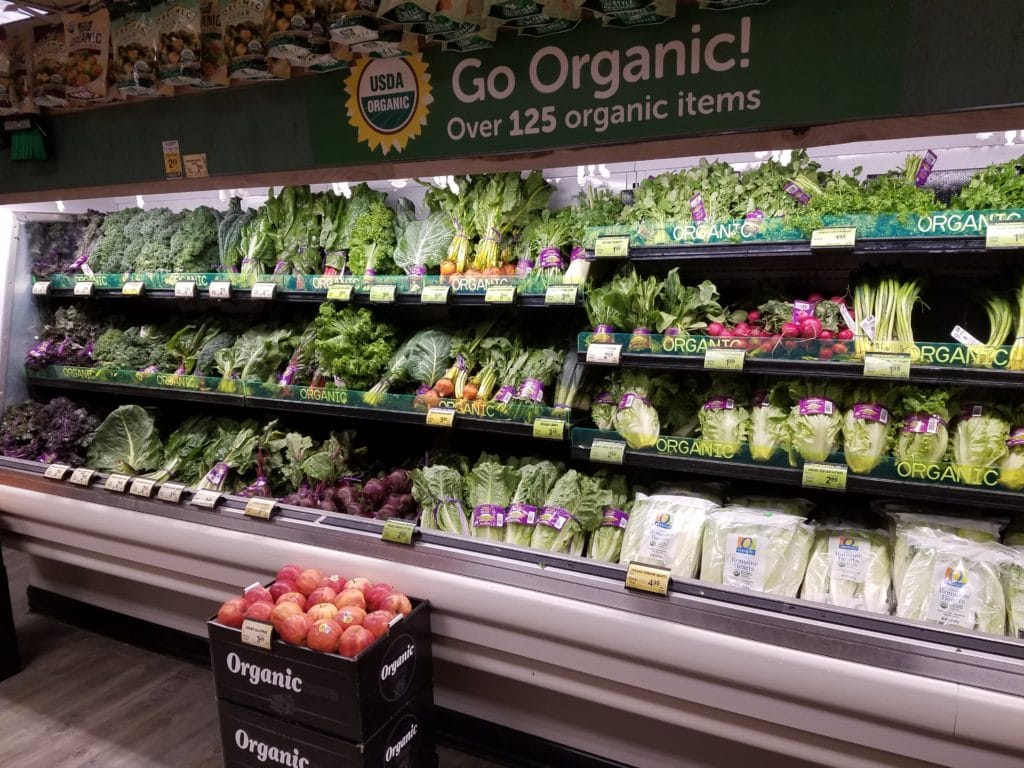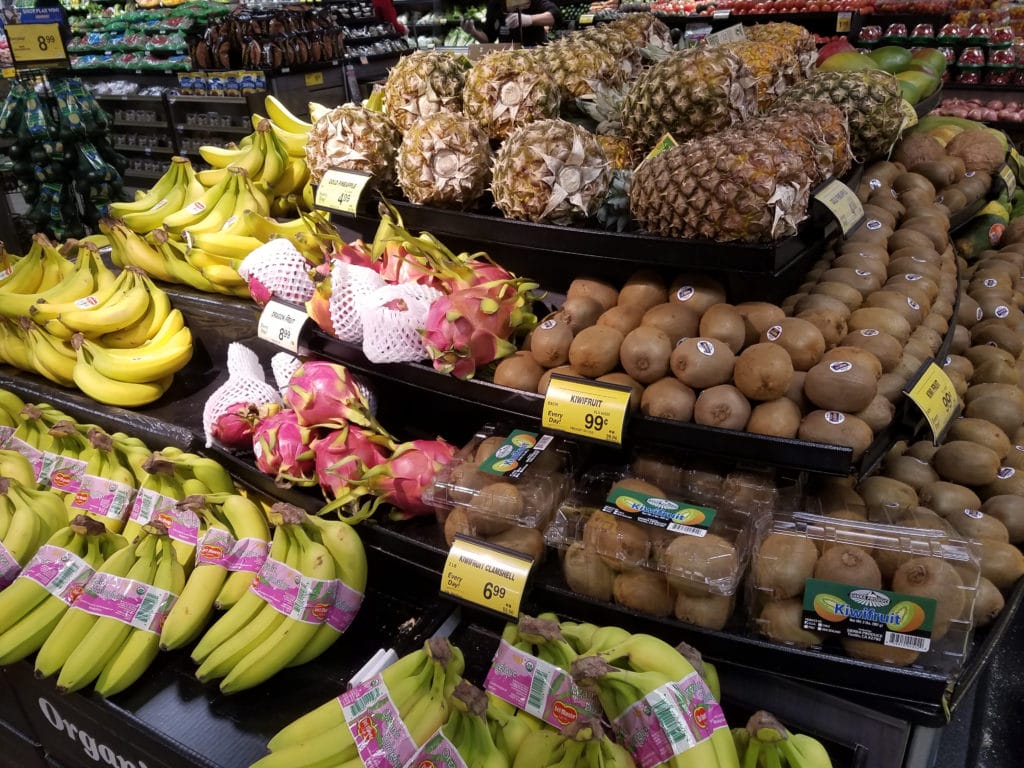On February 20, the New York Times published a bizarre article by Anchorage columnist Julia O’Malley titled “Finding Produce in Alaska’s Long Winter Takes Wiles and Luck.” The article claims that Anchorage residents suffer from chronic food shortages and must resort to desperate Soviet-bloc-style measures to find produce, such as squirreling pineapples into carry-on luggage or buying illicit peaches out of the trunk of the “peach guy’s” car. According to O’Malley, grocery stores offer “little relief” from frozen foods and we spend the winter “fantasizing about the pepper and snap of an arugula stem.” This latter claim raises two objections: first, nearly every grocery store in Anchorage carries fresh, organic fantasty-free arugula year-round. Second, does anyone really fantasize about arugula?
The first line of the article sets a bleak tone: “ANCHORAGE – This time of year, when the sun doesn’t edge over the mountains until midmorning and starts to sink only a few hours later…” This opener would have been appropriate around winter solstice, but on the article’s February 20 publication date Anchorage had over nine and a half hours of daylight, only an hour less than Seattle. It’s not promising when your article begins with a claim that can be debunked by any Anchorage resident with a window.
According to Ms. O’Malley, “boxed, prewashed lettuces often arrive with an odor of decay.” Even if true, the average Anchorage grocery store provides numerous other fresh options. Photo taken at the Turnagain Carrs on February 22, just after the publication of Ms. O’Malley’s article.
To make Anchorage produce sound prohibitively expensive, Ms. O’Malley only cites prices from New Sagaya, a gourmet market known for its specialty goods. But the vast majority of Anchorage residents don’t buy their produce at New Sagaya. Instead, they turn to ordinary national grocery store chains. Costco, for example, sells high-quality produce in bulk, year-round, at affordable prices.
Even the anecdotes in the article invite head-scratching. Ms. O’Malley claims that “in this cosmopolitan city of 350,000, people who like to cook spend the moonlit mornings before work scrolling through Instagram pictures of faraway blood oranges…” I’m not sure how “faraway” Ms. O’Malley lives from Carrs, but they have blood oranges in stock right now and they’re delicious. Also, according to the US census and Alaska Dept. of Labor the population of Anchorage is closer to 300,000, but at this point in the article such errors hardly seem consequential.
For some on-the-street perspective Ms. O’Malley interviews several gourmet cooks, including cookbook author Kim Sunee and Carlyle Watt, the head baker at Fire Island Rustic Bakeshop. Mr. Watt misses perfect D’Anjou pears. Ms. Sunee, pictured in the article wearing a black fur coat, must smuggle authentic proscuitto di Parma from Italy and imports salmon from New York City. Call me crazy, but importing salmon from New York City sounds about as needless as importing coconuts from the North Slope. But to each their own. While Ms. Sunee and Mr. Watt have contributed to Anchorage’s culinary scene, their needs are clearly far removed from those of ordinary Alaskans. There are those in every city whose extraordinary tastes cannot be met by local supply.
The organic produce section at the Turnagain Carrs on February 22. “Deprived” Alaskans have only five or six varieties of organic apples to choose from at this average grocery store.
When Ms. O’Malley’s article appeared on the New York Times website it was flooded with comments from bewildered Alaskans. Mary Kovis Watson writes: “I’ve lived in Fairbanks since 1988 and have never gone without fresh produce.” Irene Wood comments: “This article is clever but not that accurate… we enjoy good access to fresh vegetables year-round.” Anna from Anchorage writes: “I don’t recall ever going to any of these listed stores and not finding an abundance of beautiful bright fruits and vegetables. The selection here is wonderful.”
Some commenters couldn’t contain their frustration. Commenter Daax Taan writes from Anchorage: “For crying out loud, Julia O’Malley! We either need to get you some eye glasses, some ‘Ethics in Journalism’ training, exposure to the consequences of ‘fake news,’ or a few Sunday school classes to remind you of societal views on telling whoppers. I’ve lived in Anchorage, Sitka, Juneau and Fairbanks over the course of my long life and have never, ever not had full access to an abundance of fresh fruits and vegetables with amazing variety and high quality throughout the seasons.”
At least one commenter was able to keep a stiff upper lip when confronting Alaska’s urban food desert. As DR, from Kasilof writes, “We do not have Whole Foods but we will survive.”
According to Ms. O’Malley, Alaskans bring pineapples home in their carry-on luggage. Maybe so, but it would be much easier to visit a grocery store.
The readership of the New York Times would have been well-served with a fact-based article about food scarcity in the Bush, which should be a national embarrassment. But for most Anchorage residents, fresh produce is available in great quantity and good variety year-round, and the worst experience we’ll have with our food supply is the occasional mushy peach or bland kiwi.
Outside journalists often struggle to cover Alaska accurately. In the New York Times comments section, user Melinda called the article “Gourmet fear-mongering” and said she would “guess that Ms. O’Malley does not live in Alaska and knows very little about it.” In fact, Ms. O’Malley lives in Anchorage. It is discouraging to see a local journalist paint such a misleading picture of our city to an international audience. If Ms. O’Malley continues her food writing for the New York Times, she might consider the topic of fast food next. She doesn’t even have to wait till summer: the whoppers (both literal and literary, apparently) are available year-round.









Serial hyperbolist, chronic denier of inconvenient reality, in other words a paragon of truthiness from the left wing of judgement free insanity.
The NYT feature could have been better; still, it’s more tasteful journalism that this cantankerous commentary. The merits of this piece are lost beneath its excessive contempt. Lighten up.